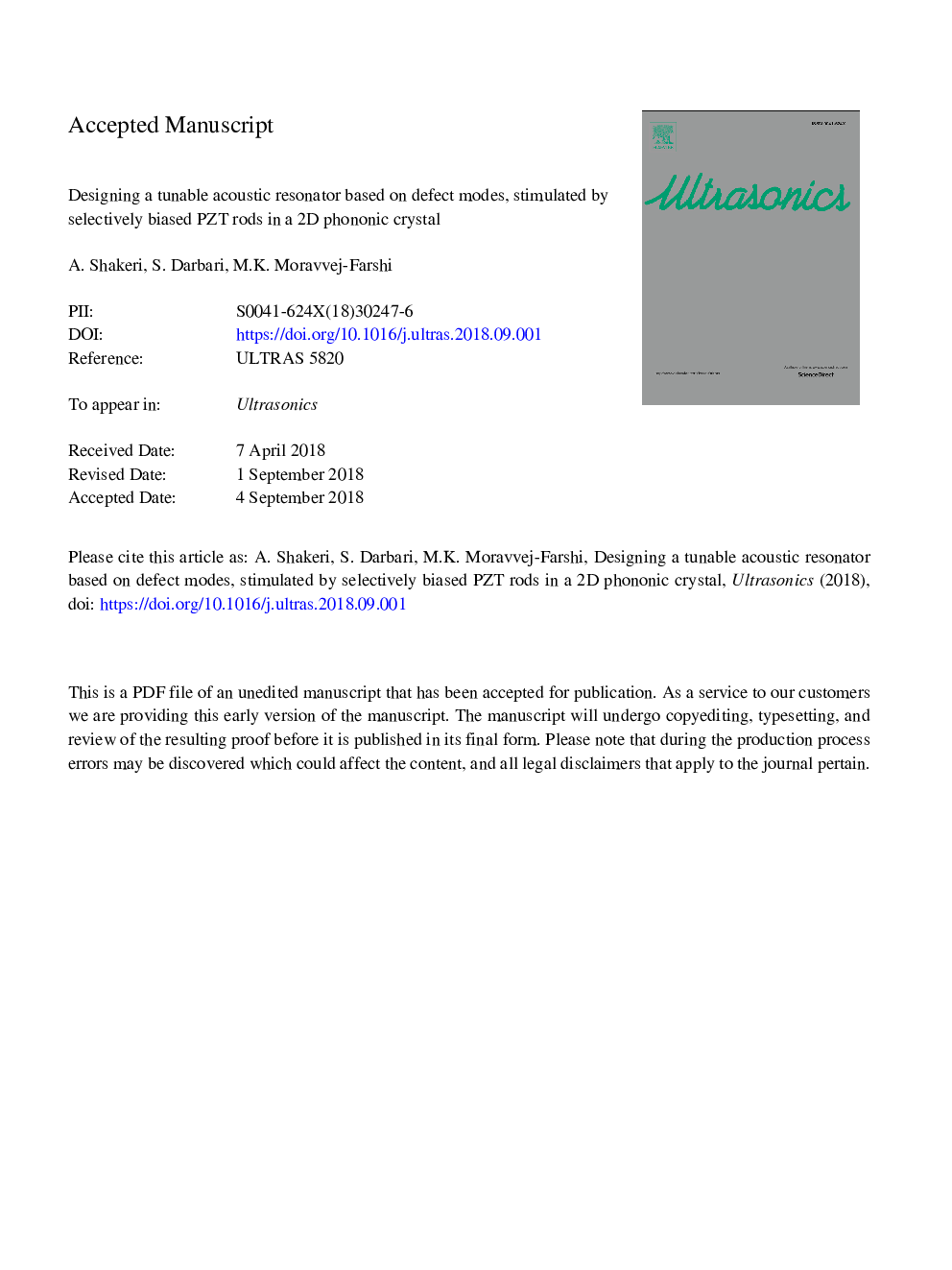| Article ID | Journal | Published Year | Pages | File Type |
|---|---|---|---|---|
| 10149331 | Ultrasonics | 2019 | 15 Pages |
Abstract
Reconfigurable phononic crystals (PnCs) and related devices are highly attractive because of their flexibility for different applications. We present the design procedure for a tunable acoustic resonator based on a 2D PnC, consisting of a periodic array of piezoelectric rods of radii 175â¯Î¼m as inclusions arranged in air background. A single point defect devised by a rod of radius 161â¯Î¼m, replacing one of the inclusions, plays the role of the acoustic resonator, leading to a defect frequency in the phononic band gap (fdâ¯ââ¯432â¯kHz). Applying a â¼1% strain to the defect rod, via an external voltage, tunes the defect resonant frequency within the phononic band gap. It is shown that the maximum tunability and the frequency shift depends on the defect size, and is achieved about Îfdâ¯=â¯440â¯Hz for the defect with the expense of descending quality factor. Considering the pattern of the localized pressure field, we introduce a multi-defect structure with five symmetric defect rods, corresponding to the maxima of field distribution. It is shown that maximum frequency shift of the dominant defect frequency is achieved about Îfdâ¯=â¯1.14â¯kHz for defect radius of 161â¯Î¼m, when all five defect rods are strained. The proposed tunable filter based on multi-defect structure results in an enhancement of about 2.6 times in the maximum frequency shift, in comparison with the single defect structure, and introduces a promising approach for realizing tunable acoustic devices.
Related Topics
Physical Sciences and Engineering
Physics and Astronomy
Acoustics and Ultrasonics
Authors
A. Shakeri, S. Darbari, M.K. Moravvej-Farshi,
